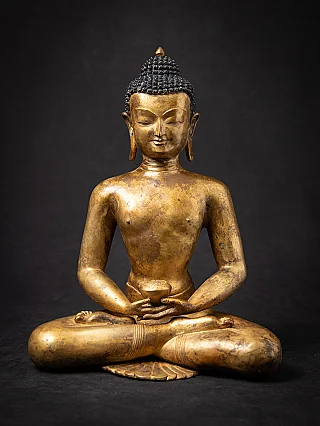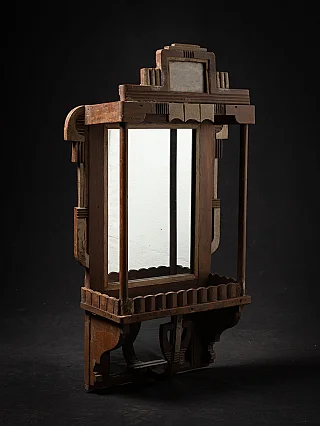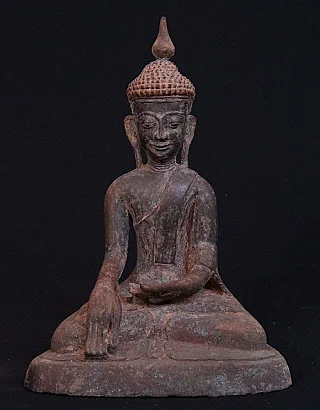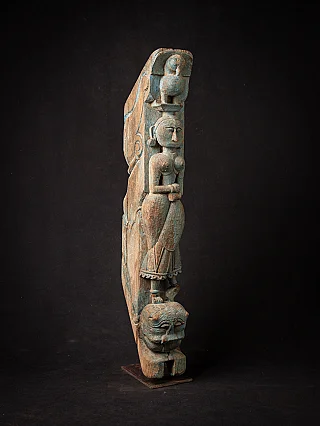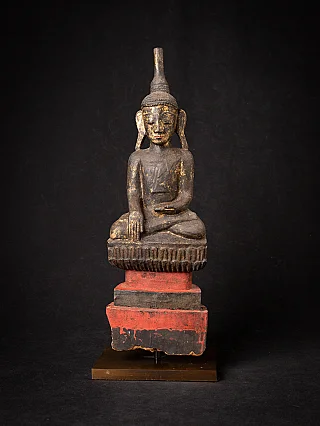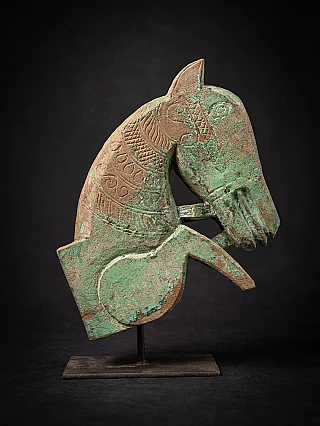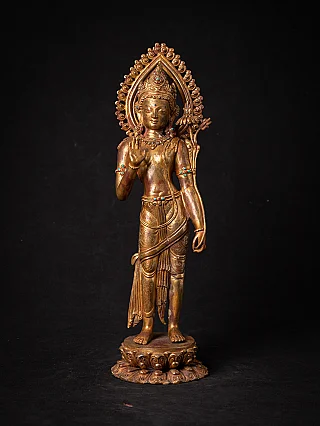Buddhism's Symbols, Early Chinese Paintings, and Heian Japan
Author : Peter Vredeveld

Buddhism encompasses a variety of symbols that represent different concepts and ideas. These symbols hold significant meaning within the Buddhist tradition, resonating with practitioners and conveying profound messages. In addition, exploring the rich history of early Chinese paintings and the captivating era of Heian Japan provides insights into the diverse cultural tapestry of these regions.
Explore our beautiful collection of Buddha statues
Symbols in Buddhism
Buddhism incorporates various symbols that serve as visual representations of essential teachings and ideals. Each symbol carries its unique meaning, contributing to the rich tapestry of Buddhist philosophy. Here are some widely recognized symbols in Buddhism:
The Right-coiled White Conch:
The Right-coiled White Conch symbolizes the profound and melodious sound associated with the teachings of Dharma. Its coiling on the right side represents its resonance with disciples, encouraging them to awaken from ignorance and focus on their well-being as well as the welfare of others.
The Precious Umbrella:
The Precious Umbrella symbolizes protection, shielding individuals from harm and illnesses. It represents the aspiration to alleviate suffering in the realms of gods and humans, providing a refuge from the challenges of existence.
The Victory Banner:
The Victory Banner symbolizes triumph in various endeavors, even in challenging circumstances. It represents the victory of Buddhist principles over harmful forces and ill intentions, instilling confidence and resilience in practitioners.
The Golden Fish:
The Golden Fish symbolizes the fearlessness and resilience of human beings. Just as Fish move effortlessly in water, these Fish represent the ability to navigate through the ocean of suffering without losing hope, embodying strength and perseverance.
The Auspicious Drawing:
The Auspicious Drawing symbolizes the interconnectedness between worldly matters and religious doctrines. It signifies the harmony between wisdom and compassion, two essential qualities on the path to enlightenment. This symbol reflects the unity that emerges when wisdom and compassion are united.
The Lotus Flower:
The Lotus Flower is a powerful symbol of purity and enlightenment. Despite growing in muddy waters, the lotus rises above the impurities, symbolizing body, mind, and speech purification. It represents the potential for wholesome actions to blossom into liberation and happiness.
The Treasure Vase:
The Treasure Vase represents the abundance of positive aspects of life. It symbolizes prosperity, posterity, and freedom, continuously showering individuals with blessings and good fortune.
Early Chinese Paintings

Chinese paintings have a long and illustrious history that dates back approximately 6000 years. The art of painting in early China involved pulverized or crushed minerals to create intricate designs, figures, and shapes on pottery. These patterns often featured dots, animals, zigzags, and spirals, showcasing ancient Chinese civilizations' artistic skills and creativity.
Early Chinese paintings initially served ceremonial purposes, particularly during the burials of essential figures. Over time, the art form evolved, with depictions of humans and animals alongside functional vessels becoming more prevalent. Notably, the Han Dynasty witnessed significant advancements in Chinese painting, with the creation of beautiful figurines becoming a common subject.
Early Chinese paintings were found on bronze vessels during the flourishing Bronze Age. However, this practice was relatively short-lived. A groundbreaking development occurred with the invention of Xuanzhi or Shuen paper during the Tang Dynasty. Traditionally made from rice or Elm, this paper provided a new medium for artistic expression and contributed to the further evolution of Chinese painting.
Chinese artists explored a wide range of subjects in their paintings. Human figures, flowers, birds, nature, and calligraphy became prominent themes. Calligraphy, in particular, remains a remarkable art form in China to this day, combining the beauty of brushstrokes with written characters.
Ongoing research continues to shed light on the origin and nature of early Chinese paintings, unraveling this ancient civilization's fascinating history and artistic legacy. These studies give us a deeper understanding of Chinese culture and artistic heritage.
Heian Japan: The Golden Age

The Heian Period, which was from the 9th to the 12th century, is considered Japan's golden age. It was an era characterized by stability, relative peace, and the presence of a central government based in Heian-Kyo (present-day Kyoto), and this period preceded the medieval era of samurai and shoguns, leaving behind a legacy of profound cultural and artistic contributions.
Heian Japan was divided into provinces governed by appointed officials under the imperial government in Heian-kyo. Society was structured into two classes: commoners and nobles. The powerful nobles occupied the upper echelons of society, while soldiers, artisans, merchants, and peasants constituted the lower ranks. The cities thrived with artisans and merchants utilizing their skills and contributing to the region's prosperity.
The underclass in Heian Japan consisted of entertainers, workers in noble trades, and laborers. Alongside the lay population, the clergy played a significant role in society. The clergy included individuals from all classes and emphasized celibacy. Notably, the highest-ranking clergy members often came from the ruling class, further highlighting the intertwining of religion and social hierarchy.
Towards the end of the Heian period, large monasteries increasingly engaged in warfare, favoring specific secular political groups. These monasteries, once devoted to spiritual pursuits, became embroiled in power struggles, reflecting the changing dynamics of the time.
The development of Japanese culture can be traced back to the Jomon culture, which was established approximately 5000 BCE. Fishing villages characterized this era, and unique pottery was one of its defining features. Subsequently, the Yayoi culture emerged around 300 BCE, introducing agriculture and metalwork to mainland Japan. Clans led by small groups of warriors formed the social structure of the Yayoi period.
In the 6th century, the Yamato clan rose to prominence, assuming leadership over much of Japan. Prince Shotoku, a member of the Yamato clan, played a significant role in shaping the future of Japan. He worked towards creating a strong centralized government modeled after China, adopting Buddhist principles and other ideas from the Chinese government. In 600 CE, the land was divided into provinces, each governed by officials accountable to the emperor.
The concept of a centralized government, proven successful in China, also took root in medieval Japan. The establishment of Nara as the capital city in the eighth century granted the nobles more significant influence and power, gradually diminishing the authority of the emperors. To protect the land, nobles formed small armies known as samurai, who would later play a crucial role in shaping Japan's medieval history.
By the 12th century, power struggles between wealthy families erupted, leading to conflicts and territorial disputes. Despite the turbulence, Japanese culture flourished during the medieval age. Buddhism became deeply ingrained in society, fostering artistic and architectural developments, while drama and literature thrived, creating enduring cultural legacies.
The comprehensive exploration of Buddhism's symbols, early Chinese paintings, and Heian Japan embarks upon a captivating odyssey through the annals of history and the tapestry of culture. These multifaceted facets of human expression and ingenuity proffer invaluable insight into the intricate belief systems, artistic pinnacles, and societal frameworks that molded these extraordinary civilizations. By delving into these immersive domains, we glean a more profound cognizance of the transcendental symbolism permeating Buddhism, the artistic legacy entrenched in ancient China, and the glorious epoch of the Heian period in Japan.
Share this page




















